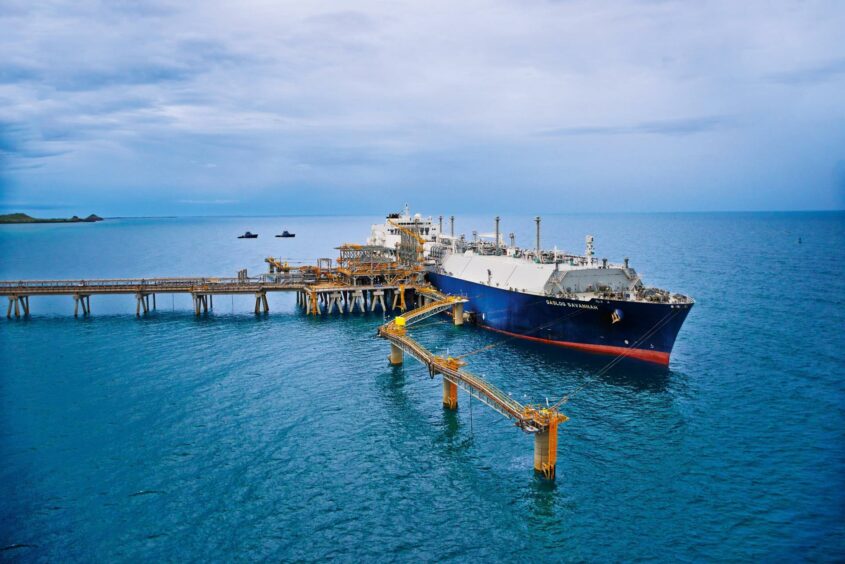
Spot liquefied natural gas (LNG) prices in Asia remain near unprecedented highs, driven by market tightness and supply-side uncertainties made worse by the Russia-Ukraine conflict. Significantly, while the persistently high LNG prices might be a boon for producers, they may stunt long-term demand expansion in Asia.
“Price spikes and supply disruptions have dramatically strengthened the economic and security case against LNG. Some developing Asian nations may begin to reassess plans to boost LNG imports,” cautioned Sam Reynolds, an energy finance analyst with the Institute for Energy Economics and Financial Analysis (IEEFA), that focuses on the economic, financial, and climate risks associated with natural gas and LNG infrastructure developments in emerging Asia.
“As price volatility continues, mature and emerging LNG importers are seeking the nearest exit. If they take more permanent steps to limit LNG demand, exporters may find liquefaction assets increasingly unnecessary or unviable,” Reynolds warned in his latest report.
Asian spot LNG prices averaged $23.6/million British thermal units (Btu) during the first two weeks of May, slightly lower than the year-to-date average of $29.9/million Btu, but still trending well over historical norms.
Analysts at Fitch Solutions noted that “the current lofty heights being scaled by the benchmark compares to 2021 when prices averaged $17.9/million Btu, which at the time was deemed high and led to murmurs of potential demand destruction, as a strong post-pandemic rebound in global demand, combined with low stocks and supply constraints in Europe, drove prices significantly higher.”
The extent to which the regional benchmark has rallied becomes even starker when compared to the average of $5.6/million Btu seen prior to the onset of the Covid-19 pandemic in 2019, added Fitch.
Therefore, it should come as no surprise that LNG demand appears to be softening in Asia. LNG delivery data cited by Fitch shows that berths for LNG import vessels at ports in Asia fell 7% during the first four months of 2022 compared to the same period in 2021. Conversely, the same indicator for Europe showed a 49% jump year-on-year.
Indeed, there is a real risk that demand expansion across some markets could stall or even trend downwards in the coming months, in response to higher prices, Fitch warned in its latest report.
Moreover, “the current market conditions remain difficult for Asia’s net LNG importing markets, many of whom rely on the fuel for power generation and have made it a centrepiece of their long-term decarbonisation strategies,” said Fitch.
“A short-term measure being adopted in some markets to navigate the current price upturn has been to use more coal, which even after its own recent price rally, still remains a cheaper power source compared to gas,” added the research firm.
Crucially, many Asian nations have revised their long-term power development strategies to incorporate more gas into the energy mix as part of the energy transition, with low LNG prices seen over the past few years making it easier to justify new, heavier investments, into LNG-related infrastructure from an economic sense, noted Fitch.
“The prospect of LNG prices remaining higher for the foreseeable future potentially spells trouble in the more price-sensitive markets in South and Southeast Asia, already fuelling murmurs of the risks involved with becoming overly-exposed to LNG,” warned the firm.
Nevertheless, the Fitch Solutions long-term view is for both gas demand and LNG imports in Asia to see healthy expansion over the coming years, with the fuel expected to play a key role in the region’s lower-carbon transition. Although Asia will face price-related downside risks. The expectation for spot LNG prices is for them to continue to be elevated compared to historical norms, even as the impact of Russia’s invasion on prices begins to fade, with solid demand keeping the pressure on global supplies before more supply additions from exporters, such as Qatar, start to loosen the market from 2025.
However, IEEFA’s Reynolds warned that volatility in LNG markets will not go away anytime soon, which he argues will create demand destruction in emerging markets. “By the time newly sanctioned LNG export projects arrive in the market—unlikely for at least five years—prospective customers may already have moved on.”
Southeast and South Asia are widely expected to drive global demand growth through 2040, but new LNG demand creation requires developing Asia to shoulder high, volatile fuel costs denominated in foreign currencies, Reynolds said in his latest report.
South Asian nations, such as Sri Lanka and Pakistan, are already struggling to pay for fuel supplies, triggering social unrest.
Meanwhile, Vietnam and the Philippines are expected to become new entrants to the LNG market this year, with new terminals due online before the fourth quarter.
Although “there are signs that national tolerance for LNG risks is waning. Fuel price volatility is undermining Vietnam’s ability to finalise long-term power sector plans. In the Philippines, the Department of Energy has promoted energy efficiency to lessen reliance on globally sourced fuels while promoting domestic renewable energy alternatives,” added Reynolds.
Still, countries across Southeast Asia are struggling with waning upstream gas production, most notably Vietnam and Thailand, as well as the Philippines. They have increasingly viewed LNG imports as a solution to falling output. But Southeast Asian nations banking on importing LNG might do well to take another look at encouraging exploration and development of domestic resources. Many industry observers believe Southeast Asia needs a “shale” moment. That is new ideas, outside the box thinking, new technologies, as well as different ways of doing things. But above all new government policy needs to encourages this type of innovation to reverse upstream output declines and improve energy security in parallel with the energy transition.
Recommended for you

